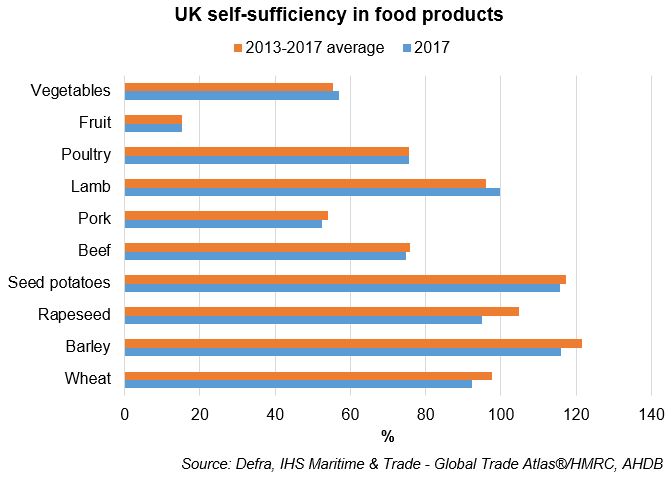Will Britain become more self-sufficient in food post-Brexit?
Tuesday, 5 March 2019
The short answer is, who knows. That could largely depending on whether a deal with the EU is agreed or not. If a deal were agreed then it would be expected nothing much would initially change. While there would still be negotiations on the future relationship, short-term the situation should not change.
However, if a deal was not agreed and the UK leaves end of March, the situation would be rather different. For those sectors less than 100% self-sufficient, it will not be as simple as increasing production. The market value, competitiveness against imports and processing capacity will all play a part in the ability to increase production. For livestock, carcass balance issues will mean while improving in demand cuts/products, those not in domestic demand would also be increased so export markets will be key to get the most value out of the carcass. For lamb, although near 100% self-sufficient on average, this is calculated on a tonnage basis and the UK consumes more legs than shoulders (resulting in us importing more of one cut and exporting the other).
For fruit/vegetables, it will be down to land and labour availability, prices and feasibility of growing in the UK climate
If increasing production is an option then import displacement would, for most areas, be needed. While for some elements this could be achieved, there will still be a need to import products we do not produce/produce to the level other countries do. The level of opportunity for import displacement will also depend on the tariff schedule the UK adopts post-Brexit.
While a higher degree of self-sufficiency allows more ability to adapt to changes, it is not that straight forward. Ability to export, export tariffs, non-tariff measures, etc. could affect value while there could also be a threat of cheaper imports from lower cost producers.
This is the current state of the self-sufficiency for sectors is shown on the graph below.


